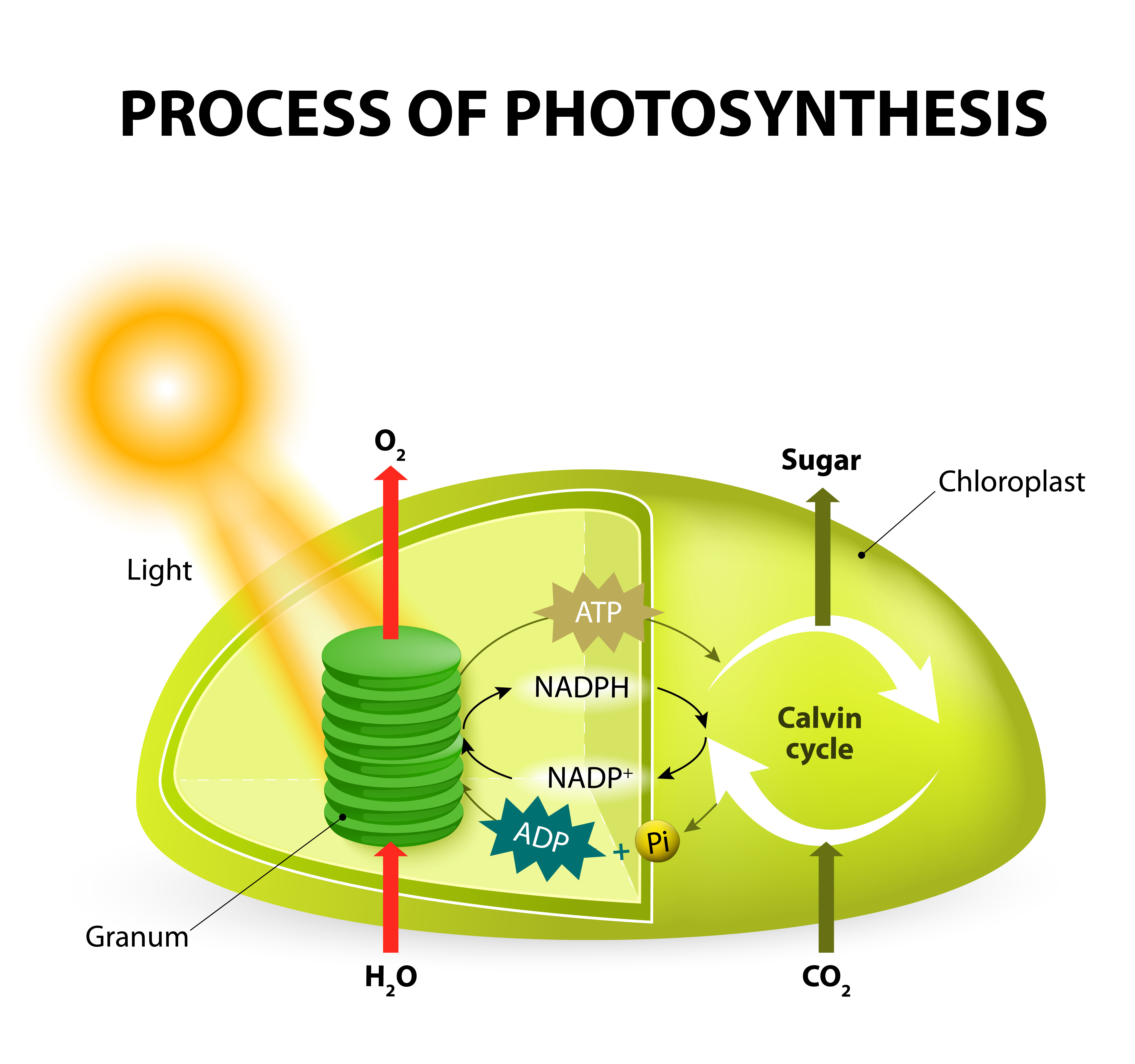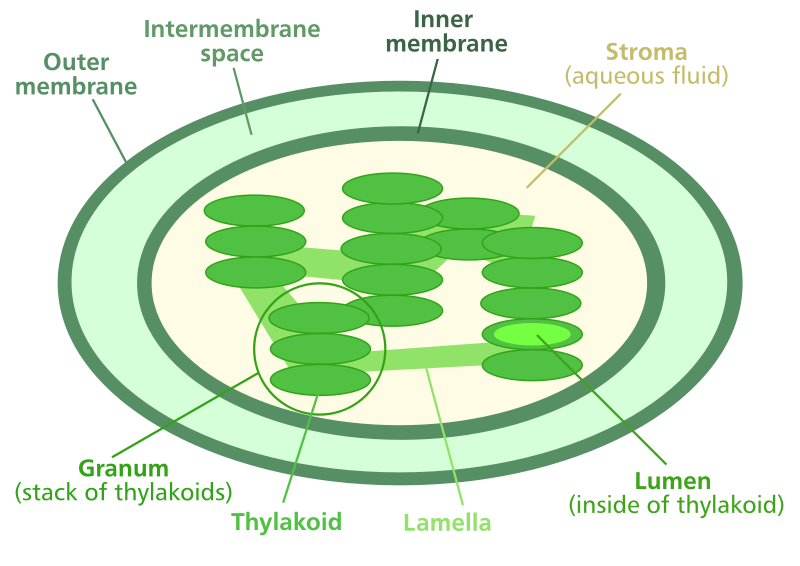What does the stroma do in a chloroplast? The stroma is a vital component of chloroplasts, the organelles responsible for photosynthesis in plant cells. It’s a thick fluid that fills the space between the chloroplast’s inner membrane and the thylakoid membrane system. The stroma is more than just a filler; it’s a bustling hub of metabolic activity, playing a crucial role in the process of photosynthesis and other essential cellular functions.
Imagine the stroma as a bustling factory, filled with intricate machinery and workers. It’s where the building blocks of life are assembled, where energy is transformed, and where essential molecules are synthesized. The stroma is a critical player in the intricate dance of life within plant cells, ensuring that plants can harness the power of sunlight to create energy and grow.
Introduction to Chloroplasts

Chloroplasts are essential organelles found in plant cells, playing a vital role in photosynthesis, the process by which plants convert light energy into chemical energy. They are responsible for capturing sunlight and utilizing it to produce glucose, the primary source of energy for plants and, ultimately, for all life on Earth.Chloroplasts are fascinating structures with a complex internal organization that facilitates their crucial role in photosynthesis.
They are characterized by their green color, which arises from the presence of chlorophyll, a pigment that absorbs light energy.
Chloroplast Structure
The chloroplast is enclosed by a double membrane system, known as the chloroplast envelope. This envelope separates the chloroplast’s internal environment from the cytoplasm of the cell. Inside the chloroplast, there are numerous internal compartments that contribute to the process of photosynthesis.
- Stroma: The stroma is the fluid-filled region that surrounds the thylakoids. It contains enzymes, ribosomes, and DNA, which are necessary for the synthesis of proteins and other molecules involved in photosynthesis.
- Thylakoids: Thylakoids are interconnected, flattened, sac-like structures that are stacked into columns called grana. The thylakoid membrane is where chlorophyll and other pigments are embedded, enabling the capture of light energy.
- Grana: Grana are stacks of thylakoids, connected by interconnecting tubules called lamellae. The stacked structure of grana increases the surface area for light absorption and facilitates the efficient transfer of electrons during photosynthesis.
The chloroplast’s structure is intricately designed to optimize the process of photosynthesis. The thylakoids provide a large surface area for light absorption, while the stroma contains the necessary enzymes and components for the conversion of light energy into chemical energy. This complex organization ensures that chloroplasts can effectively carry out their primary function in plant cells.
The Stroma
The stroma is a semi-fluid, colorless matrix that fills the space between the thylakoid membranes in a chloroplast. It is a dynamic and vital compartment within the chloroplast, playing a crucial role in photosynthesis and other metabolic processes.
Stroma Composition and Location
The stroma is composed of a complex mixture of enzymes, proteins, and other molecules essential for various metabolic activities. It is enclosed by the inner membrane of the chloroplast, separating it from the cytoplasm of the cell. This compartment serves as a central hub for several critical reactions within the chloroplast.
Stroma: The Site of the Calvin Cycle
The stroma is the primary site for the Calvin cycle, a crucial metabolic pathway in photosynthesis. This cycle utilizes the energy captured from sunlight in the form of ATP and NADPH, produced during the light-dependent reactions, to convert carbon dioxide into glucose.
Key Enzymes and Molecules in the Stroma, What does the stroma do in a chloroplast
The stroma houses a diverse array of enzymes and molecules essential for the Calvin cycle and other metabolic processes. These include:
- Rubisco (Ribulose-1,5-bisphosphate carboxylase/oxygenase): The primary enzyme responsible for fixing carbon dioxide into an organic molecule. It is a complex enzyme with a large active site, and it plays a critical role in the first step of the Calvin cycle.
- Ribulose-5-phosphate kinase: An enzyme that catalyzes the phosphorylation of ribulose-5-phosphate, a key intermediate in the Calvin cycle.
- Glyceraldehyde-3-phosphate dehydrogenase: An enzyme that catalyzes the conversion of 1,3-bisphosphoglycerate to glyceraldehyde-3-phosphate, another crucial step in the Calvin cycle.
- Starch synthase: An enzyme that catalyzes the synthesis of starch from glucose, a process that stores excess carbohydrates produced during photosynthesis.
- DNA and ribosomes: The stroma contains its own DNA and ribosomes, allowing for the synthesis of some of the proteins required for its functions.
Stroma’s Role in Photosynthesis

The stroma, a semi-fluid matrix within the chloroplast, plays a vital role in the light-independent reactions of photosynthesis, also known as the Calvin cycle. This process utilizes the energy captured during the light-dependent reactions to convert carbon dioxide into sugar.The stroma provides the necessary environment for these reactions to occur. It houses the enzymes and other molecules required for carbon fixation, the initial step of the Calvin cycle.
The stroma also contains its own DNA and ribosomes, allowing it to synthesize some of its own proteins.
The Calvin Cycle
The Calvin cycle, a series of biochemical reactions occurring within the stroma, is responsible for converting carbon dioxide into glucose. This process can be divided into three main stages:
- Carbon fixation: In this stage, carbon dioxide from the atmosphere is incorporated into an organic molecule, ribulose-1,5-bisphosphate (RuBP), by the enzyme RuBisCO. This results in the formation of an unstable six-carbon compound, which quickly splits into two molecules of 3-phosphoglycerate (3-PGA).
- Reduction: 3-PGA is then reduced to glyceraldehyde-3-phosphate (G3P) using energy from ATP and reducing power from NADPH, both produced during the light-dependent reactions.
- Regeneration: Some of the G3P molecules are used to synthesize glucose, while others are recycled to regenerate RuBP, allowing the cycle to continue.
Carbon Fixation
The stroma provides a suitable environment for carbon fixation by:
- High concentration of RuBisCO: The stroma contains a high concentration of RuBisCO, the enzyme responsible for catalyzing the initial step of carbon fixation.
- Presence of other necessary enzymes: The stroma also contains other enzymes required for the Calvin cycle, such as phosphoglycerate kinase and glyceraldehyde-3-phosphate dehydrogenase.
- Presence of ATP and NADPH: The stroma receives ATP and NADPH from the light-dependent reactions, providing the energy and reducing power necessary for carbon fixation and the reduction of 3-PGA.
The Calvin cycle is a complex process that requires a precise balance of enzymes, substrates, and energy. The stroma provides the ideal environment for these reactions to occur efficiently.
Stroma’s Importance in Other Cellular Processes: What Does The Stroma Do In A Chloroplast

The stroma, the semi-fluid matrix within the chloroplast, is a bustling hub of biochemical activity. While its primary role is in photosynthesis, it also plays a crucial role in the synthesis of essential molecules and the storage of energy reserves. This multi-faceted nature of the stroma highlights its importance in maintaining the overall cellular function.
Synthesis of Essential Molecules
The stroma is a vital site for the synthesis of essential molecules like amino acids and fatty acids, which are the building blocks of proteins and lipids, respectively. This synthesis is intricately linked to the products of photosynthesis.
- Amino Acid Synthesis: The stroma utilizes the ATP and NADPH generated during the light-dependent reactions of photosynthesis to power the synthesis of amino acids. These amino acids are then used to construct proteins, which are essential for various cellular processes.
- Fatty Acid Synthesis: Similarly, the stroma utilizes the energy from photosynthesis to synthesize fatty acids, which are the building blocks of lipids. These lipids are crucial for cell membrane structure, energy storage, and signaling.
Starch Storage
The stroma is also responsible for storing starch, a complex carbohydrate that serves as the primary energy reserve in plants. Starch granules are synthesized within the stroma and can be broken down into glucose when the plant requires energy.
- Starch Synthesis: When there is an excess of glucose produced during photosynthesis, the stroma converts it into starch. This process involves the formation of long chains of glucose molecules that are stored within the stroma as starch granules.
- Starch Breakdown: When the plant needs energy, the starch granules are broken down into glucose by enzymes present in the stroma. This glucose can then be used for respiration, providing the plant with energy for growth and other cellular processes.
Stroma and its Interaction with Other Chloroplast Components
The stroma, the fluid-filled region of the chloroplast, is not an isolated compartment. It engages in a dynamic interplay with the thylakoid membrane system, the intricate network of interconnected sacs within the chloroplast. This interaction is crucial for the efficient functioning of photosynthesis and other cellular processes.
Stroma’s Relationship with the Thylakoid Membrane System
The stroma serves as the site for many of the enzymatic reactions of the Calvin cycle, the light-independent phase of photosynthesis. The thylakoid membrane system, on the other hand, is the location of the light-dependent reactions. These reactions generate ATP and NADPH, which are essential for the Calvin cycle to occur. The stroma and the thylakoid membrane system are thus inextricably linked, forming a cooperative unit for photosynthesis.
Stroma’s Interaction with Grana and Thylakoid Lumen
The thylakoid membrane system is organized into stacks called grana, connected by interconnecting membranes called lamellae. The stroma surrounds the grana and lamellae, providing a continuous medium for the movement of molecules and energy. The lumen, the space enclosed by the thylakoid membrane, is separated from the stroma by the thylakoid membrane. This membrane plays a crucial role in regulating the flow of ions and other molecules between the stroma and the lumen.
Exchange of Molecules and Energy Between the Stroma and Other Chloroplast Compartments
The stroma interacts with the thylakoid membrane system through the exchange of molecules and energy. For example, the stroma receives ATP and NADPH from the thylakoid membrane system, which are then used to drive the Calvin cycle. In turn, the stroma provides the thylakoid membrane system with the products of the Calvin cycle, such as sugars. This continuous exchange ensures the smooth functioning of photosynthesis.
The stroma is a dynamic environment that interacts with the thylakoid membrane system, facilitating the exchange of molecules and energy necessary for photosynthesis and other cellular processes.
The stroma, with its vital role in photosynthesis and other cellular processes, is a testament to the complexity and elegance of life. This dynamic environment within chloroplasts underscores the importance of understanding the intricacies of plant cells, not only for scientific advancement but also for appreciating the intricate workings of nature.
FAQ Section
What is the difference between the stroma and the thylakoid lumen?
The stroma is the fluid-filled space between the inner membrane and the thylakoid membrane system, while the thylakoid lumen is the space enclosed by the thylakoid membrane.
Why is the stroma important for the Calvin cycle?
The stroma provides the necessary enzymes and environment for the Calvin cycle, which converts carbon dioxide into sugar using energy from the light-dependent reactions.
Does the stroma contain DNA?
No, the stroma does not contain DNA. The chloroplast’s DNA is located in a separate region called the nucleoid.
What are some examples of enzymes found in the stroma?
The stroma contains numerous enzymes, including Rubisco, which catalyzes the first step of the Calvin cycle, and ATP synthase, which produces ATP.






